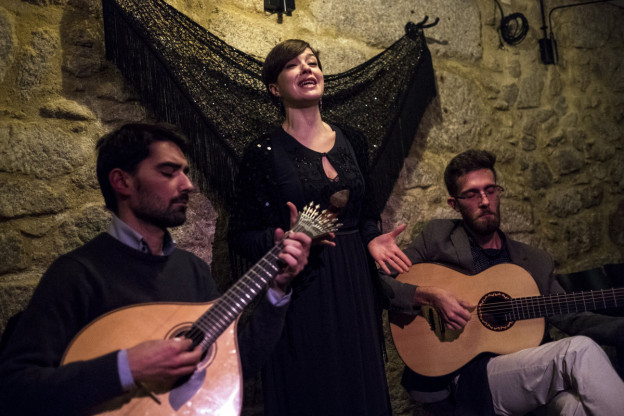Michael Edwards dons his history hat as he provides his guide to Portuguese Fado
Every culture has its songs for bad days. The American Deep South has the blues. Britain sings along to Adele’s ditties of lost love whilst Portugal has Fado. But it is Fado, not Adele, that has received UNESCO recognition. Back in 2011, fado was inscribed on the List of the Intangible Cultural Heritage of Humanity. So here is my recommended guide to Portuguese Fado in Porto.
In Portugal when the lights dim and diners hush, it is time for the Fado to be sung. In Lisbon, O Faia has hosted fado dinners since 1947. Whilst in Porto at Casa da Marquinhos, in the shadow of the cathedral, Fado has lingered over the cobbles since 1968. It’s the best place to start my guide to Portuguese Fado in Porto.
Over the years the origins of the historic and atmospheric Casa da Marquinhos have been lost. But in all probability, the name may once have been The House of the Marias.
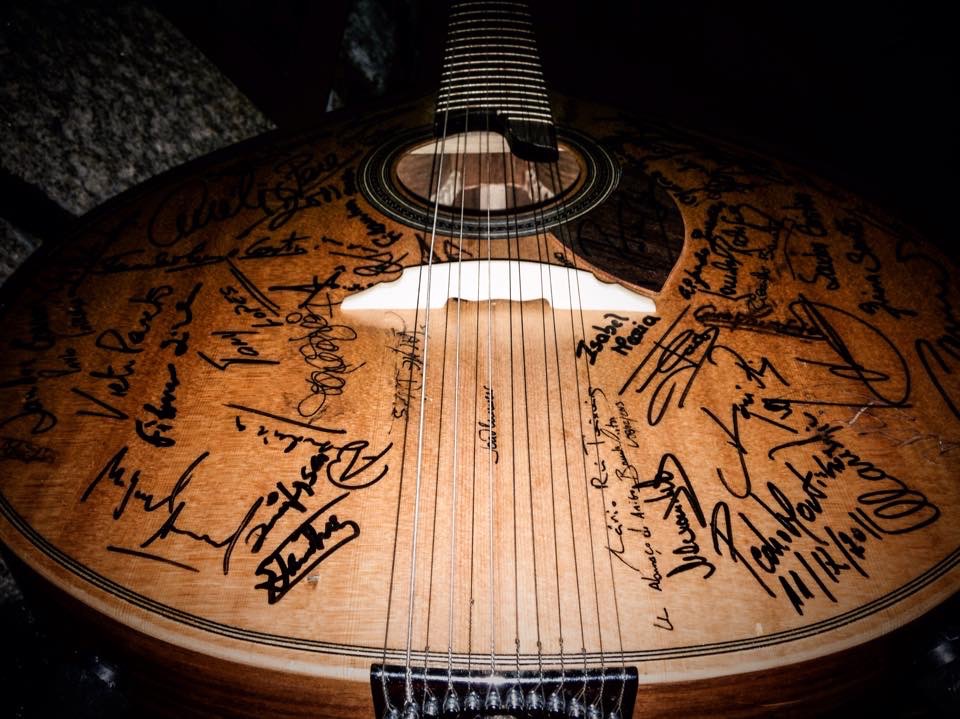
“We take all your order first,” explains our white-shirted, black trousered waiter, “so later we do not interrupt the music”. Fado restaurants take the music very seriously.
At the Casa da Marquinhos, the programme for the evening is food interspersed with four 20-minute sets of fado.
“Man, woman, man, woman – that is the tradition,” advises our waiter. Fado translates as fate. It is only fair that each sex has equal opportunity to sing of their melancholy. But this music of the soul is sung with dignity and resilience.
There is a base two-course menu at Porto’s Casa, substantial starters arrive at every table. Salted cod fritters and a round rustic mini loaf. Warm stringy skeins of cheese lengthen as eager fingers pull it apart. Our waiter chooses us a dry white Perloa wine, as chilled as the Arctic. Many of the locals opt for white port as their aperitif or a port tonica: port with a chilled tonic water.
O Faia, clinging to the cobbled hillside of Bairro Alto in Lisbon, has a wider menu and an extensive wine list. Again the fado is taken very seriously. At O Faia guests can buy a ticket just to listen to the fado.
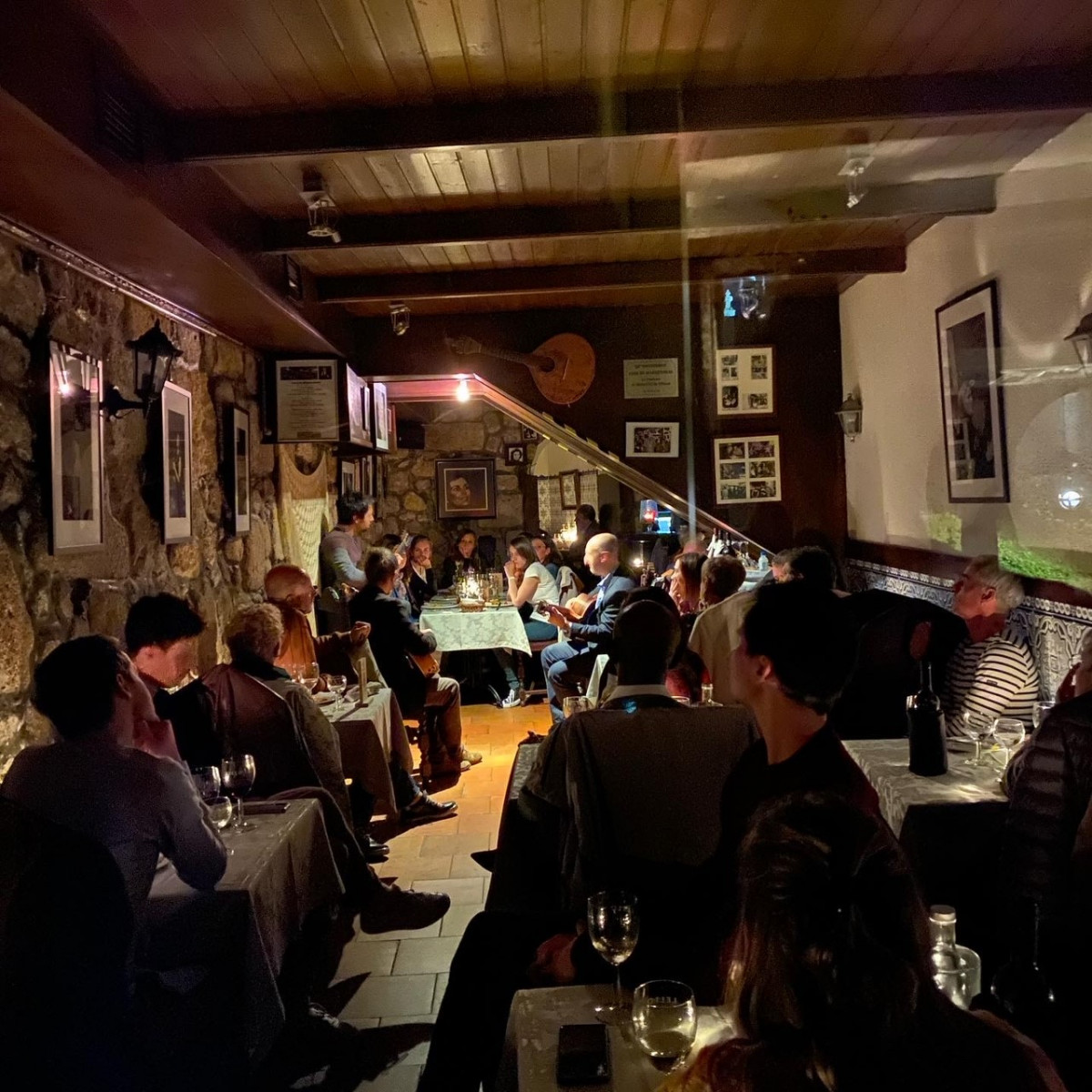
Fado is unplugged. Lit by a solitary spotlight, two guitarists play an overture. Fado’s themes are hefty but the tempo is jaunty and upbeat. One plucks an acoustic guitar, the other a traditional loot-like guitarra, appropriately shaped like a teardrop.
Beneath the dark timber beams of the Marias’ house, it is an intimate venue, rough walls giving the feel of a cave. Every table is booked but there are less than 40 diners.
Unassuming and diminutive, wearing a mid-grey suit, Antonio joins the guitarist. Although he looks like an accountant on his way home from a long day at the office, Antonio is a professional fadista. He sings every day. Between sets he merely takes a strong black expresso and a little cheese.
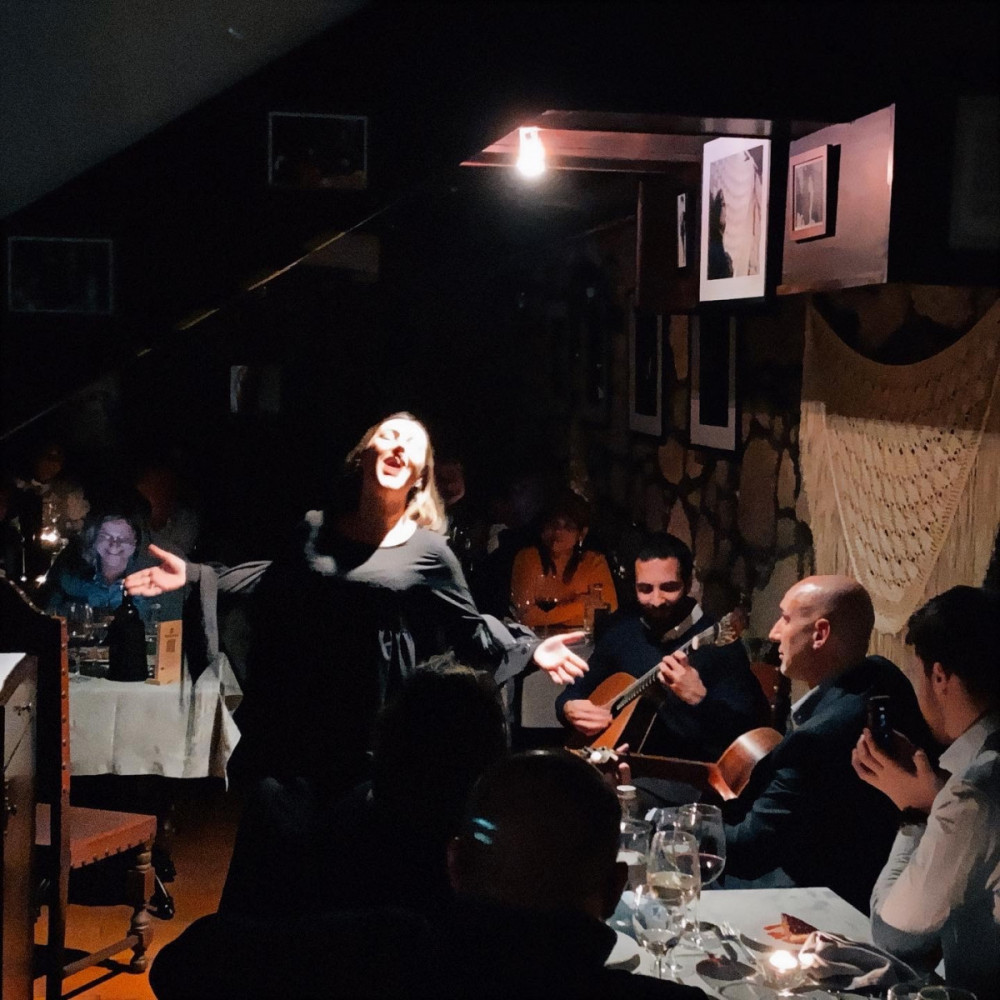
Beginning static with hands in pockets and feet still, Antonio personifies Fado’s minimalism. His eyes are closed against the woes of a cruel world. As the melancholic melody develops, he finally takes his hand from his pocket and a fist attempts to grasp happiness.
As the lights come back on main courses arrive. This is Porto, on the shoulder of the Atlantic, and many opt for sea bass fillets resting on garlicky greens and potatoes.
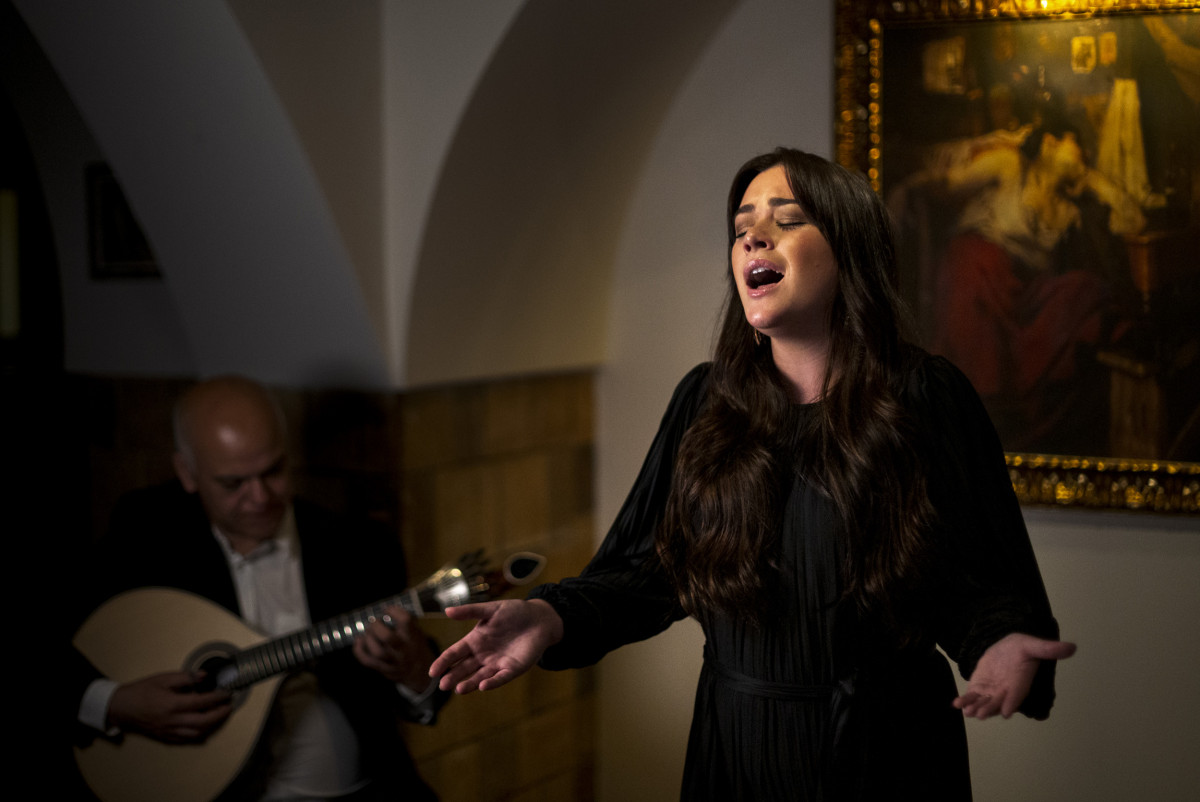
Again the lights dim. It is time for Adriana to sing. She grasps her black shawl a little tighter against adversity. There is a hint of a dark-haired Stevie Nicks after a testing day. At times the guitars fade away and her vocal alone carries the melody a capella.
For centuries, the shawl has been a symbol of Fado. Amongst the black-and-white photos, a Fado hall of fame, hang two shawls. Long ago, Fado gave women a way of expressing their problems. During Portugal’s bold sea-faring age of exploration, a woman never knew whether her man would return. And fishing amongst the storms of the Bay of Biscay was always a perilous occupation.
For a deeper insight into Fado, visit Fado na Baixa, a daily presentation of Fado songs and history. An hour-long performance tells the story of distinctive styles of fado in Coimbra and Lisbon.
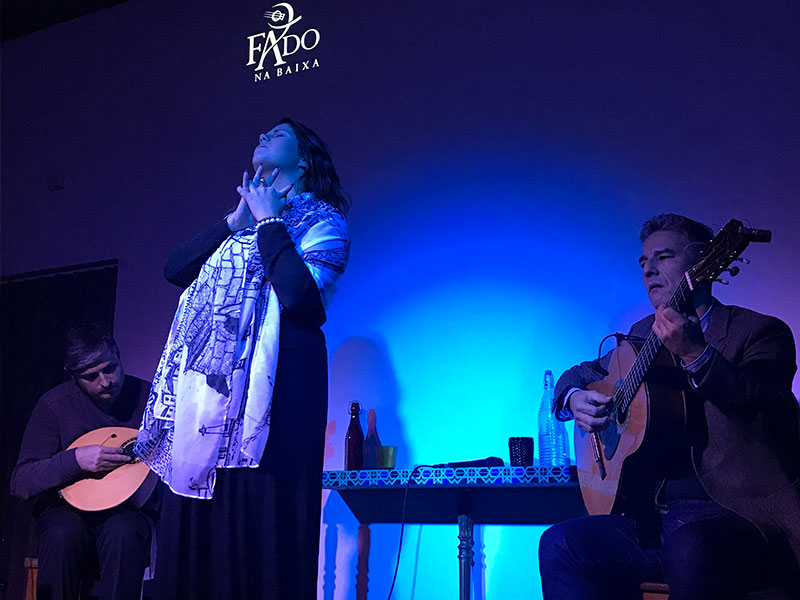
So, after my guide to Portuguese Fado, does Fado have a future? Radio and television have taken Fado on. Introduced electronic instruments and eliminated the traditional silences. Will traditional Fado survive?
Whilst humans have “saudade”, yearnings and unfulfilled dreams, Fado will live. Even when the black-shawled lady has sung the Fado show ain’t over.
Tell Me More About this guide to Portuguese Fado
O Faia – Casa de Fados, Fado Restaurant, Fado House in Lisbon
Dinner and show from around €60
Fado in Porto – Casa da Mariquinhas
Dinner and show from around €37.50
Fado na Baixa – Espetáculos de Fado ao Vivo – Fado no Porto
Porto provides a daily hour-long Fado show at 6pm, with port, €19

